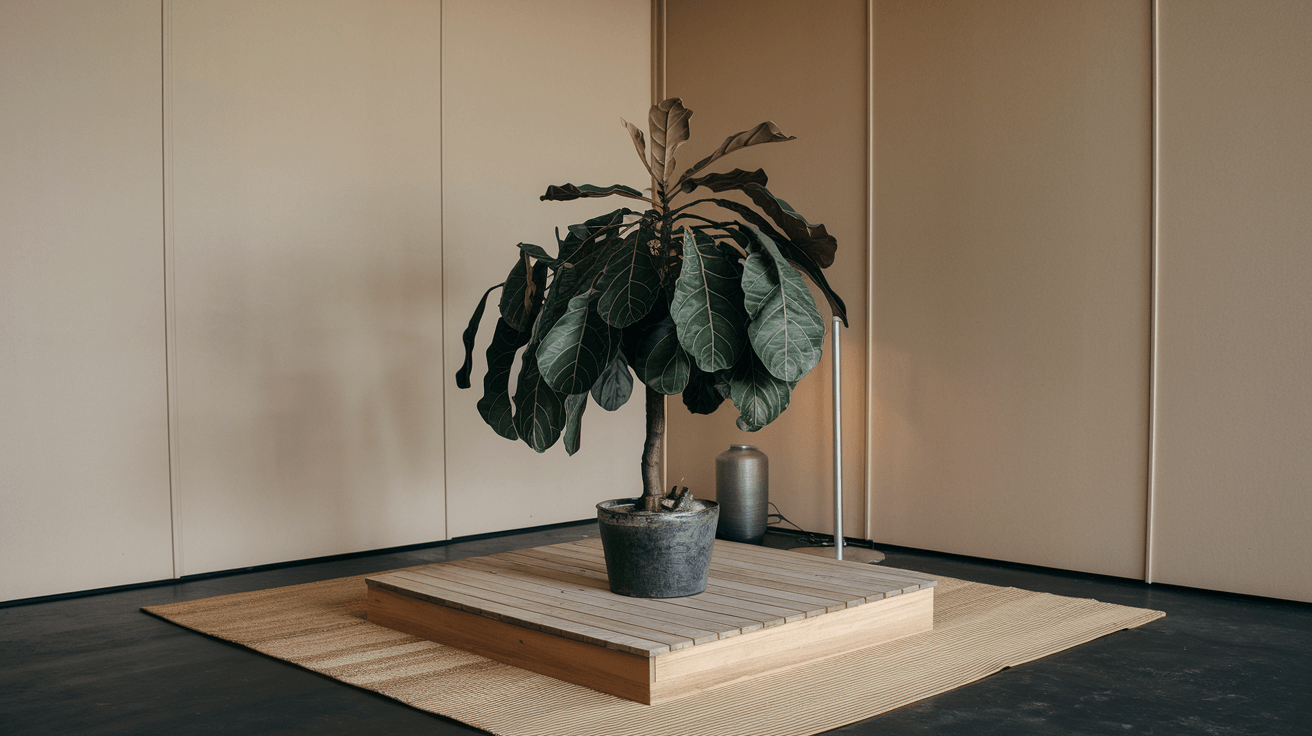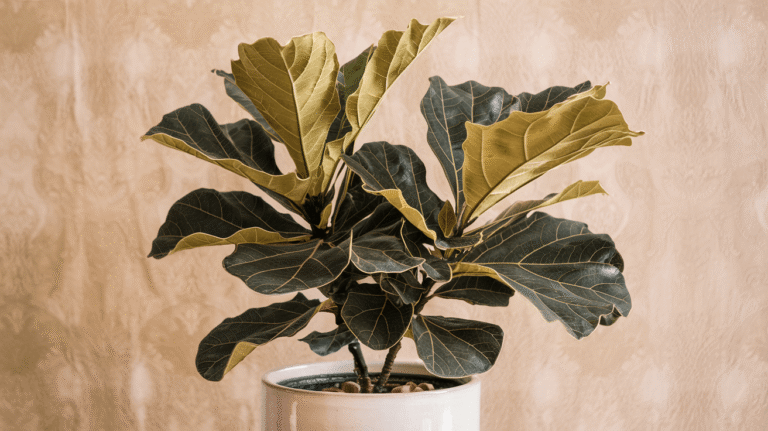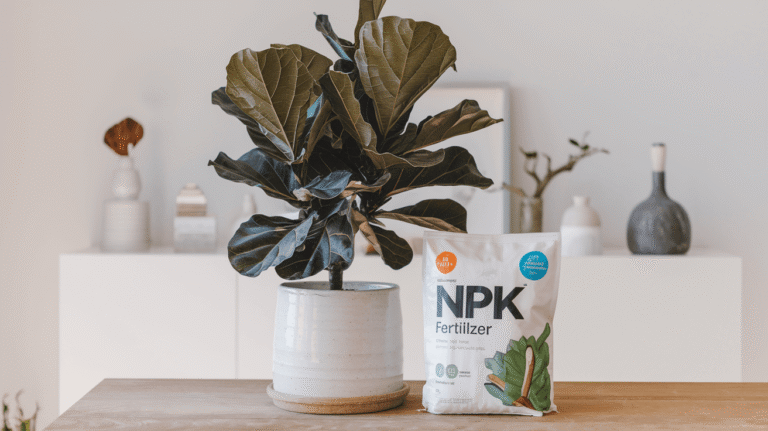The sinking feeling when you realize your fiddle leaf fig looks more dead than alive is something nearly every owner experiences at least once. Maybe it’s dropped all its leaves after a bout of overwatering, or perhaps it’s been slowly declining for months and now looks beyond saving.
The question “Is it actually dead, or is there still hope?” haunts you as you stare at what might be an expensive stick in a pot or a plant that could potentially recover. I’ve evaluated countless struggling fiddles over the years, and the reality is that these plants are both more resilient than people expect and sometimes truly beyond rescue.
The difference between giving up too early and wasting months on a genuinely dead plant comes down to knowing which specific signs indicate remaining life versus irreversible death.
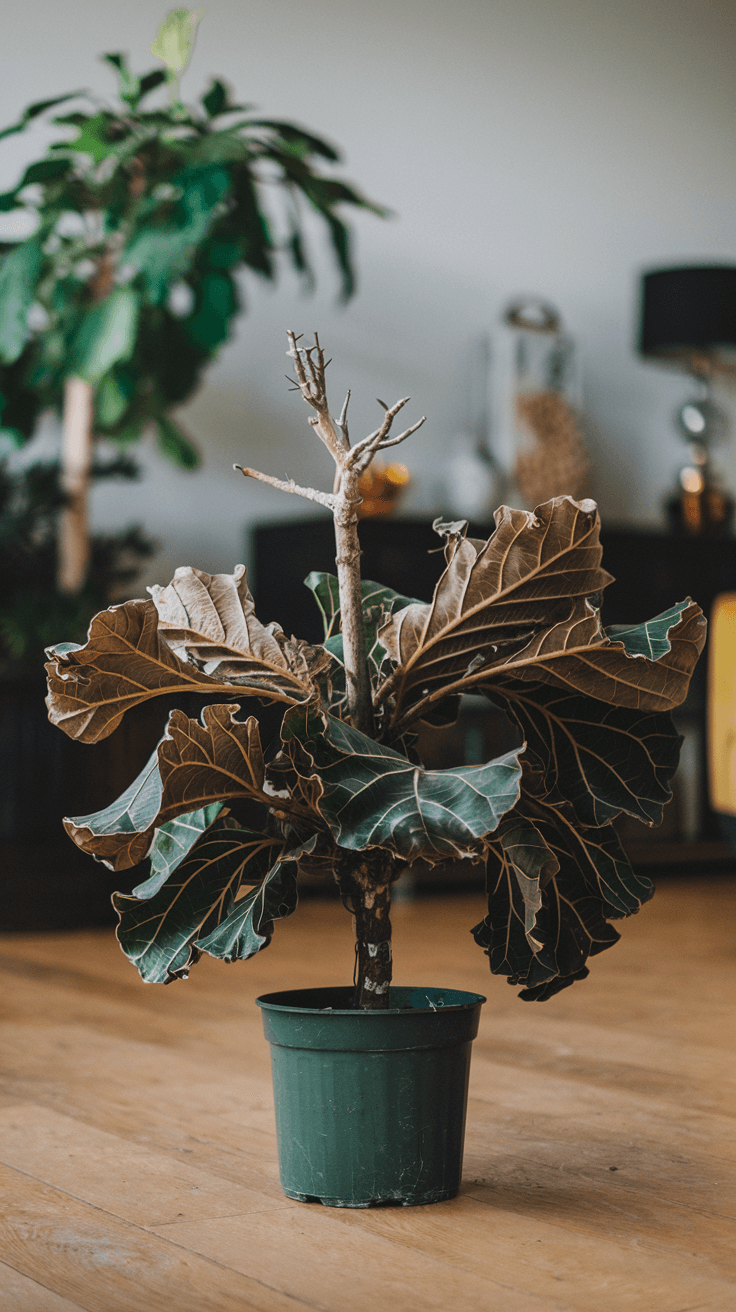
A fiddle that’s lost every leaf might still have viable roots and trunk capable of regenerating completely, while another that looks healthier on the surface might have extensive root rot that’s already sealed its fate.
This guide teaches you exactly how to assess your fiddle’s condition systematically, checking the critical indicators that reveal whether life remains, which revival strategies work when hope exists, and when acceptance becomes the only reasonable response.
The Critical Root and Stem Assessment
The root system determines whether your fiddle has any chance of survival, regardless of what’s happening above the soil line. Begin by carefully removing the plant from its pot to inspect roots directly. Healthy, living roots are firm, white to tan in color, and show some branching structure.
They resist gentle tugging and feel substantial when handled. If you find even a handful of roots meeting these criteria, your fiddle has a fighting chance.
Dead or dying roots tell a different story. They turn dark brown or black, feel mushy or slimy when touched, and often emit a sour, unpleasant odor. When you handle them, the outer layer sloughs off easily, leaving behind a thin thread-like core.
If every single root in the system shows these characteristics, your fiddle is dead or so close that recovery is functionally impossible. However, if you find even 20-30% of roots that appear healthy, the plant can potentially rebuild.
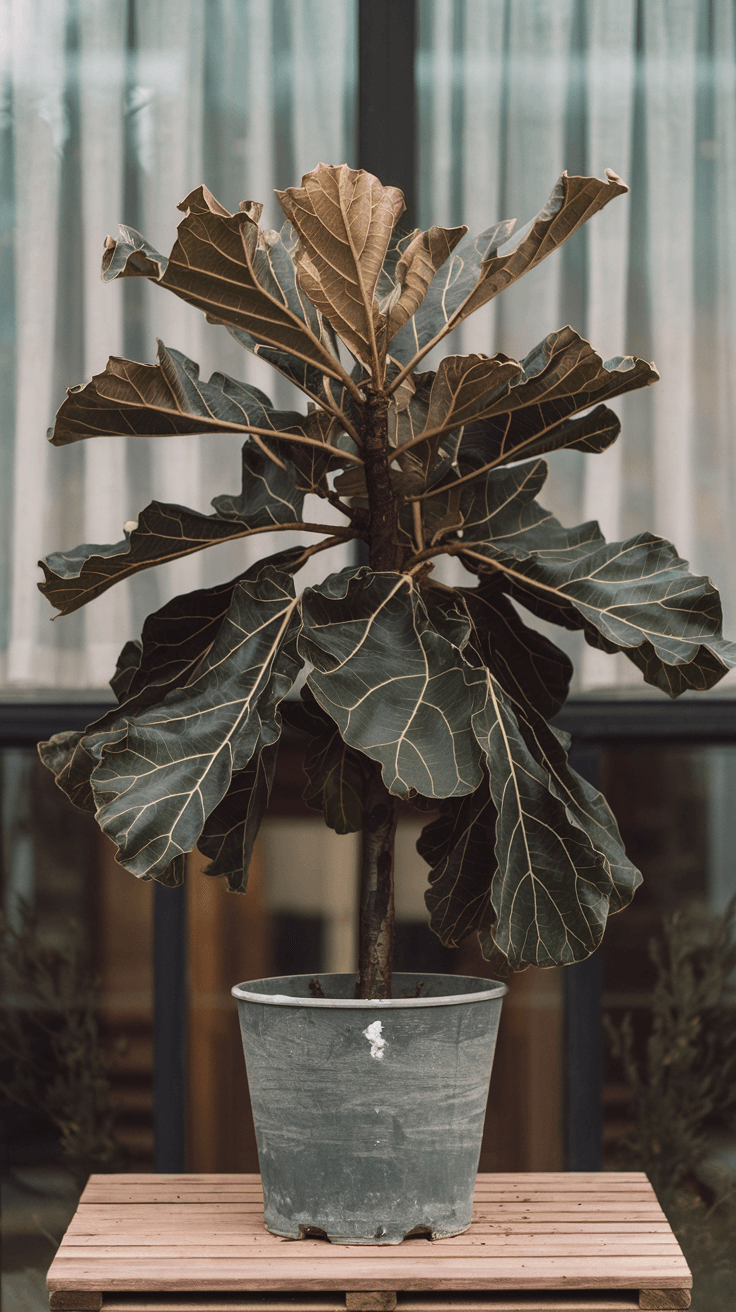
The trunk assessment requires the scratch test. Using a clean fingernail or knife, gently scrape away a tiny bit of bark on the trunk or main stem. Living tissue beneath the bark is green or cream-colored and feels slightly moist. Dead tissue is brown, dry, and completely brittle.
Test at multiple heights—start at the base and work upward, scratching every few inches. The point where tissue transitions from dead brown to living green shows you exactly how much of the plant remains viable.
Flexibility provides another clue. Living stems and trunks maintain some flexibility, bending slightly under pressure without snapping. Dead wood is completely rigid and snaps cleanly when bent, like a dry twig.
However, be cautious with this test—apply only gentle pressure to avoid damaging potentially living tissue.
Pro tip: If the trunk shows green tissue anywhere above the soil line, even just an inch above the roots, that’s enough for potential recovery. The plant can generate new growth from any section of living stem, though recovery will be slow.
Leaf and Branch Vitality Indicators
A fiddle that’s dropped all its leaves isn’t necessarily dead—it may be in survival mode, conserving energy while dealing with stress. The presence or absence of leaves tells you less about viability than the condition of remaining branches and whether growing points show any activity.
Examine the terminal buds at branch tips carefully. Living buds are green, firm, and tightly closed. Dead buds turn brown, dry out, and eventually fall off.
Remaining leaves, if any exist, provide important clues. Leaves that are merely damaged—brown edges, spots, or even significant yellowing—indicate stress but not necessarily death. The plant is struggling but still metabolizing.
Leaves that have turned completely brown and crispy throughout their entire surface, especially if they’ve shriveled and dried rather than yellowing first, suggest the branch supporting them has died. However, check the stem below those leaves—sometimes branches die while the trunk remains alive.
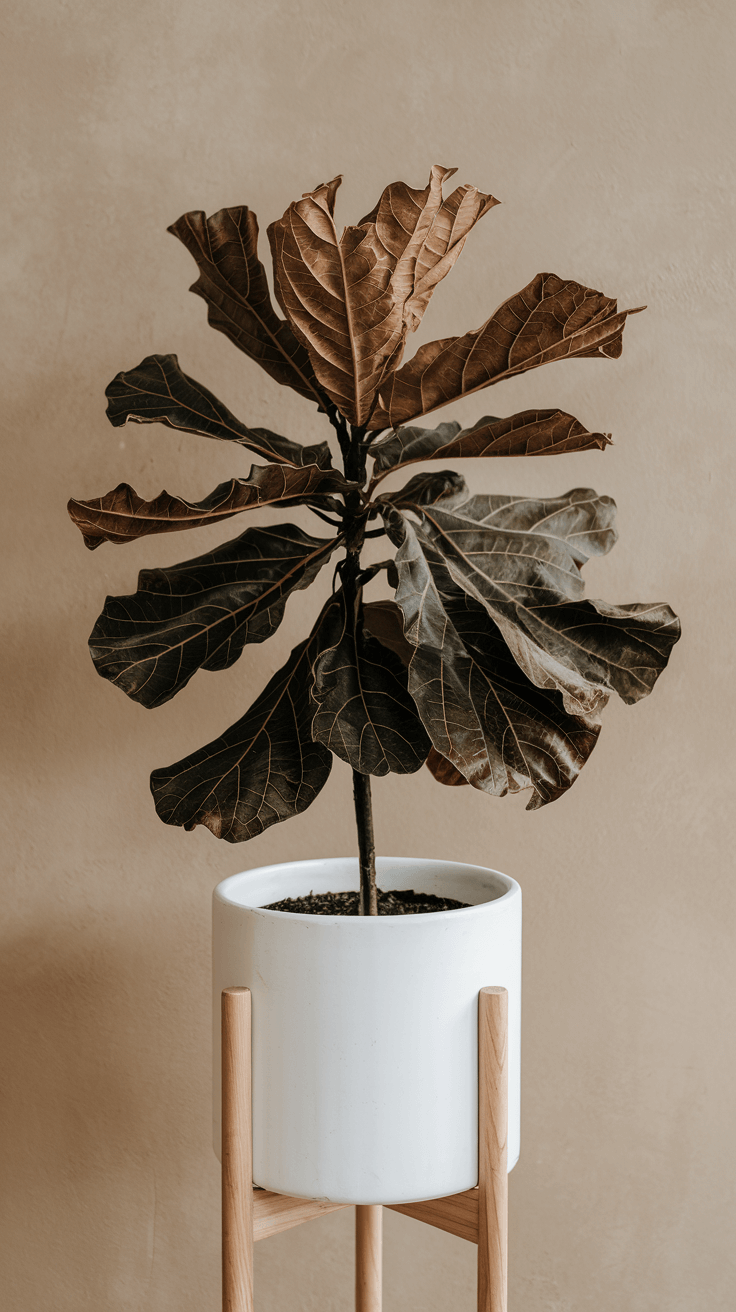
New growth emergence is the most definitive sign of life. Even tiny green bumps appearing along the trunk or at branch nodes indicate active growth. This can occur even on plants that look completely dead, sometimes emerging months after a major stress event.
I’ve seen fiddles that stood leafless for 8-10 weeks suddenly produce new shoots, going on to full recovery over the following year.
The timing of decline matters for prognosis. A fiddle that crashed suddenly—losing all leaves within 2-3 weeks—often has better recovery odds than one that’s been slowly declining over 4-6 months.
Sudden decline usually results from a single fixable problem like overwatering or cold shock. Gradual decline often indicates progressive root failure that’s harder to reverse.
Expert insight: Document your plant’s condition with dated photos. Changes over 2-3 weeks reveal whether you’re seeing slow recovery or continued decline, information that’s impossible to assess in a single moment.
The Definitive Life vs. Death Tests
The cambium scratch test provides the most reliable assessment. The cambium is the thin layer of actively growing tissue just beneath the bark. Scratch small sections at various heights and locations on all major branches and the trunk.
If you find green cambium anywhere, life remains in that section. Map out which areas are alive versus dead—you may discover that 60% of the plant is dead but 40% remains viable.
Bud inspection requires close examination under good lighting. Use a magnifying glass if available to check terminal and lateral buds along branches. Living buds show green tissue inside when gently squeezed or partially opened. They feel plump and hydrated.
Dead buds are hollow, brown throughout, and completely dried out. Even one or two living buds on an otherwise dead-looking plant provide regeneration points.
The bend-and-snap test works for branches and smaller stems. Apply gentle bending pressure. Living wood flexes and returns to position. Dead wood either snaps immediately with a dry crack or bends but doesn’t return, showing no elasticity.
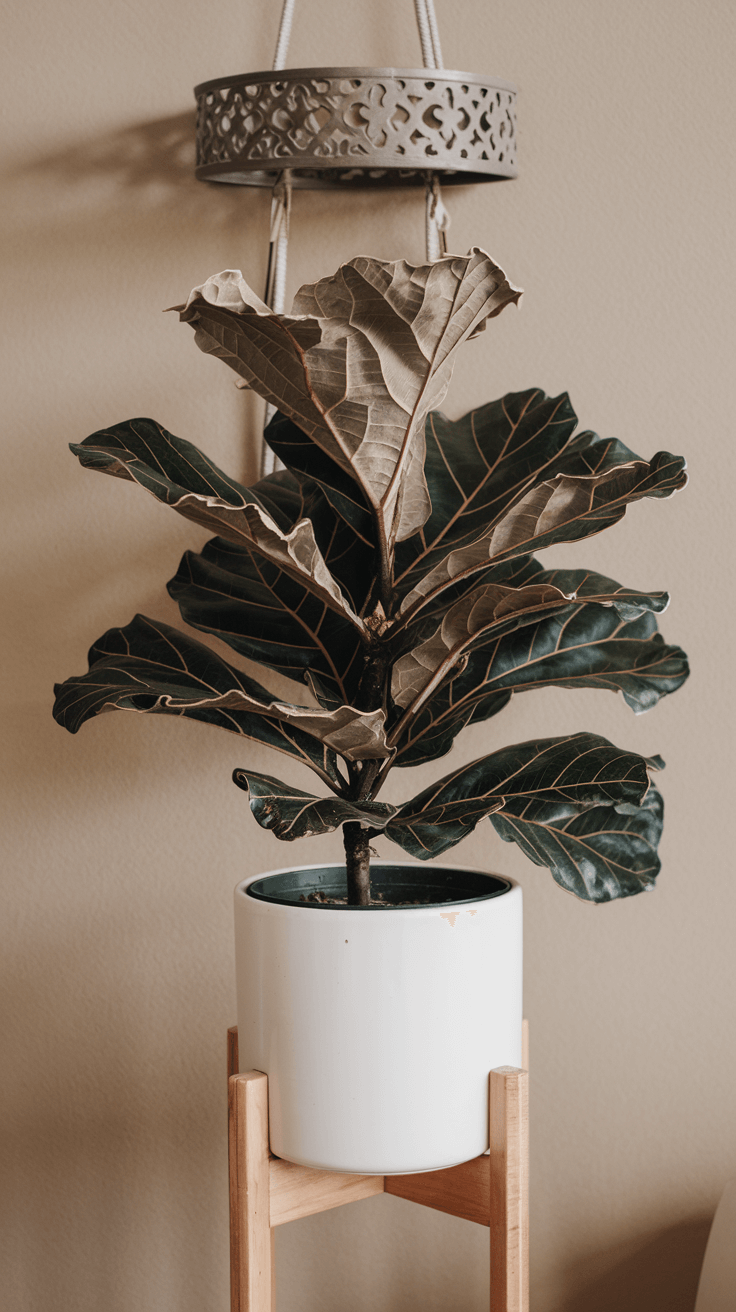
This test is destructive, so use it only on sections you suspect are already dead.
Root regeneration potential exists even when current roots are largely dead. If the trunk base shows green tissue in the scratch test, the plant can generate entirely new roots from that living tissue. This process takes 4-8 weeks under optimal conditions and requires keeping the base in consistently moist (not wet) conditions.
I’ve successfully propagated fiddles with completely dead root systems but living trunks by treating them essentially as large cuttings.
Water uptake assessment helps with borderline cases. Water the plant thoroughly and check again 24 hours later. If the soil has dried noticeably and the pot feels lighter, the plant is taking up water—a definitive sign of life.
If soil remains as wet as immediately after watering despite warm conditions, the root system isn’t functioning, suggesting death or near-death status.
Action step: Create a simple map of your fiddle showing which sections tested positive for life (green cambium) versus dead (brown cambium). This visualization helps you decide whether enough remains to justify rescue attempts.
Revival Strategies When Hope Exists
If your assessment reveals any living tissue, immediate action maximizes recovery chances. For plants with partial root death, remove all dead roots completely using sterilized pruning shears, cutting back to healthy white tissue.
Repot into fresh, well-draining mix in a pot sized appropriately for the remaining root mass—often smaller than the original pot. Water lightly initially, increasing gradually as new root growth establishes.
Trunk-alive but roots-dead scenarios require cutting the living trunk section just below the lowest point of green tissue revealed by scratch tests. Treat this section as a large cutting, placing it in water or directly into moist propagation medium.
Maintain humidity around the stem using a clear plastic bag tent. New roots should emerge within 4-8 weeks if conditions are warm (70-75°F) and bright but not sunny.
Reduce stress on recovering plants by placing them in bright indirect light, maintaining stable temperatures between 65-75°F, and keeping humidity elevated if possible. Avoid fertilizing until you see active new growth—damaged plants can’t process nutrients and fertilizer salts may cause additional stress.
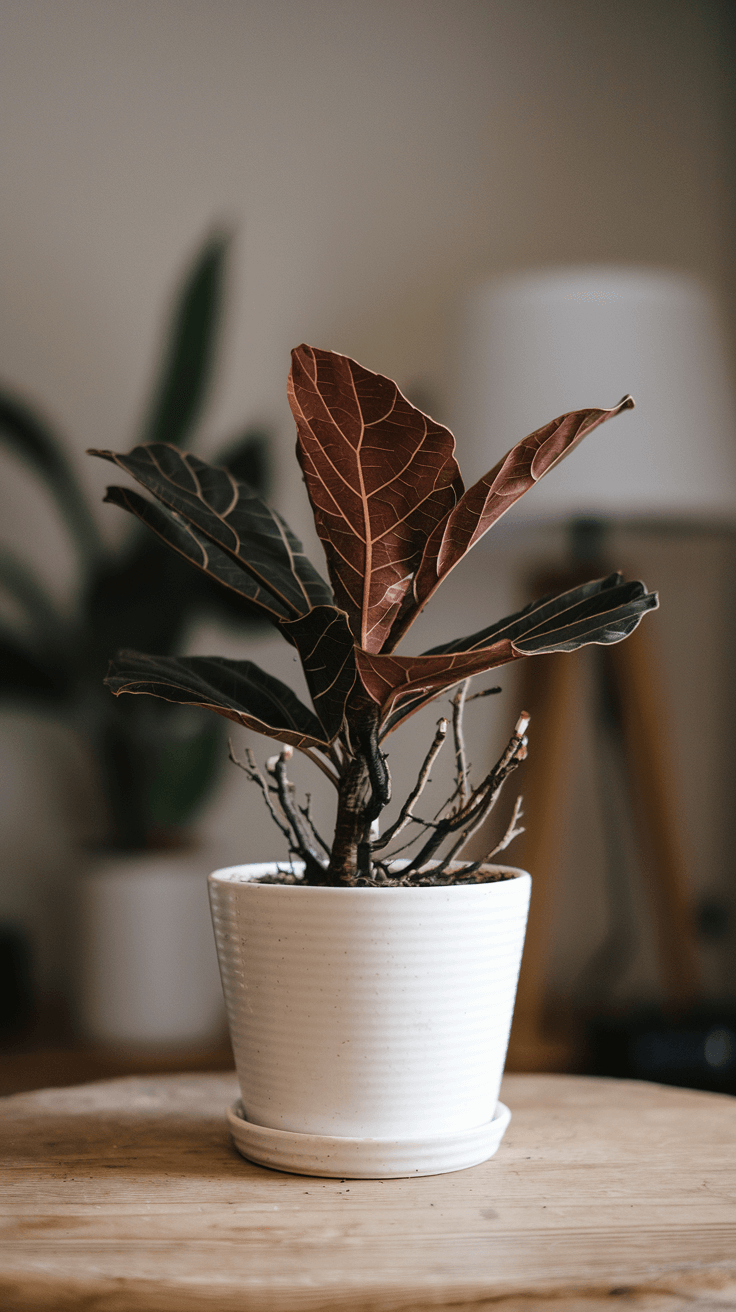
Water only when the top inch of soil dries, maintaining consistent slight moisture without saturation.
Prune away all dead branches and leaves, cutting back to living tissue. This serves two purposes: it prevents rot from spreading into healthy tissue, and it reduces the plant’s resource demands, allowing it to focus energy on regeneration rather than trying to maintain dead structures.
Make clean cuts just above nodes or at branch collars using sterilized tools.
Patience becomes critical during recovery. Expect 4-8 weeks before seeing new growth if you’re starting from a severely damaged plant. Growth will be slow initially—perhaps one small leaf every month or two. Full recovery to an attractive specimen takes 6-12 months minimum, often longer.
During this time, resist the urge to “help” with excessive care that often backfires.
When to Accept Death and Move On
If every scratch test reveals brown, dead tissue throughout the trunk and all branches, your fiddle is dead. No amount of care will revive completely dead tissue. Similarly, if the entire root system is black, mushy, and malodorous with zero firm white roots, the plant cannot recover.
These situations represent clear endpoints where acceptance is appropriate.
The smell test provides quick assessment. If you notice a strong sour or rotten odor coming from the pot or root ball, extensive rot has occurred. While isolated rot pockets can be removed, pervasive odor throughout the root system indicates rot has progressed beyond saving.
The plant has essentially decomposed from the roots up.
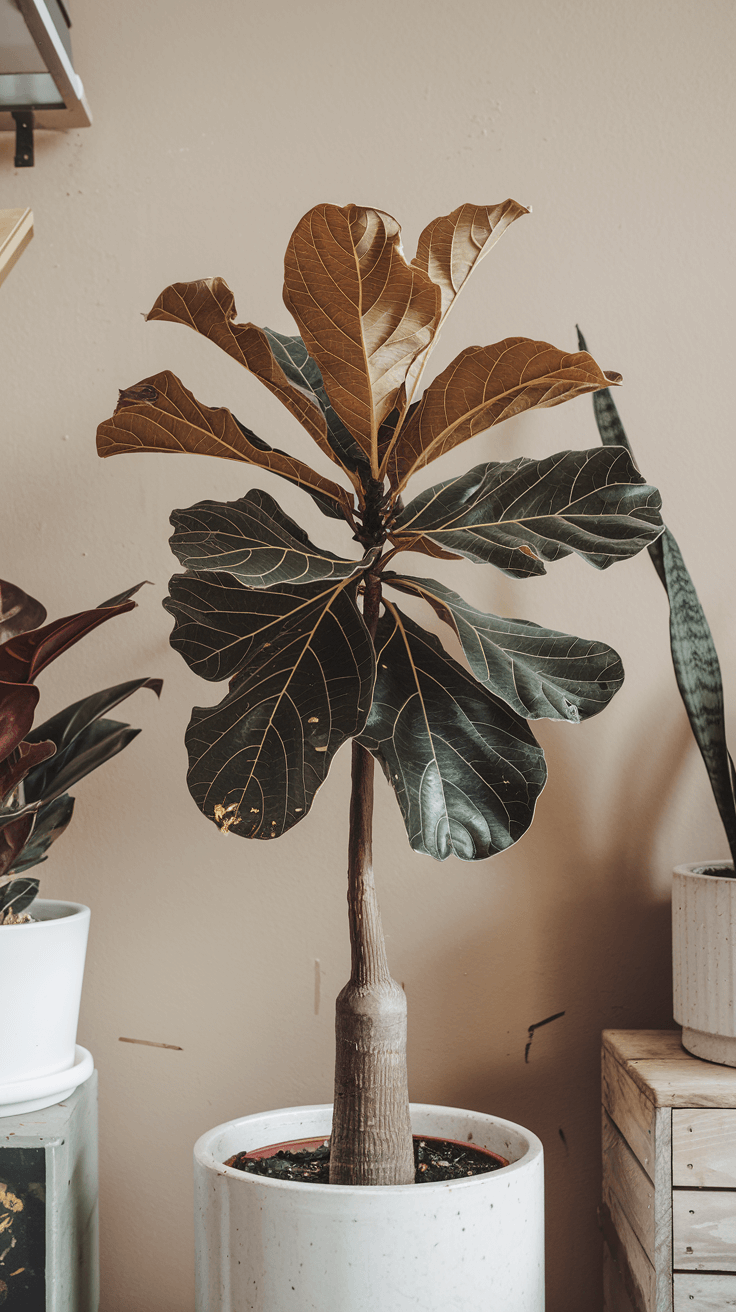
Timeline considerations matter practically. Even if small sections of tissue remain alive, ask whether the months or year of intensive care required for potential recovery is worth the investment compared to purchasing a new fiddle.
Sometimes the most rational choice is starting fresh rather than nursing a plant that’s 95% dead back to health, especially if you’re new to fiddle care and the learning curve adds to the challenge.
Physical disintegration represents another death indicator. If the trunk has become soft and collapses when handled, or if the base has rotted through creating a complete disconnect between roots and upper plant, structural integrity is gone.
These plants cannot rebuild sufficient transport systems to survive even if scattered living cells remain.
Conclusion: Making the Call
Determining whether your fiddle leaf fig is dead or savable requires systematic assessment rather than surface-level observation.
The techniques outlined—root examination, scratch tests, bud inspection, and water uptake monitoring—provide objective data that cuts through the emotional uncertainty of potentially losing a plant you’ve invested in.
Remember that fiddles showing any green cambium tissue or firm healthy roots have genuine recovery potential, though the timeline may be longer than you’d prefer. Plants that test completely brown and dead throughout all tissues are beyond recovery regardless of hope or effort.
The middle ground—severely damaged plants with minimal remaining viable tissue—requires honest evaluation of whether the recovery investment makes sense for your situation. Some plant losses teach valuable lessons about care requirements or limits that make future successes more likely.
Others represent random bad luck or uncontrollable factors that don’t reflect on your abilities. Either way, having definitive answers about your plant’s status—living with hope for recovery or dead requiring replacement—brings clarity that allows you to move forward confidently rather than remaining stuck in uncertain limbo.

